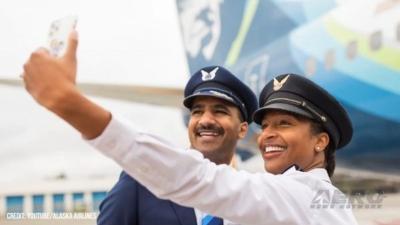Waypoints and ETAs for the Sunset Bound
The Airline Industry is in a deplorable state. Thousands of flights have been and continue to be cancelled. Innumerable travelers remain stranded in airports throughout the world. To a frightening and incontrovertible degree, Part 121 operations have degenerated into a wilderness of outrage, apologetics, labor disputes, and pilot shortages.

How did it happen, and why?
During the COVID-19 debacle, thousands of pilots were alternately fired, furloughed, or driven to early retirements. These measures were enacted as baby-boomers—who at the time accounted for nearly fifty-percent of the commercial pilot ranks—were nearing mandatory retirement age.
Presently, the better part of six-thousand pilots a year are reaching 65, the age at which the FAA mandates Part 121 aviators make for the Fields of Elysium, Fort Lauderdale, or Scottsdale—wherever salty airmen retire nowadays. By 2029, not a single baby boomer will be able to [legally] fly a commercial aircraft. As they leave, these pilots take with them not only a substantial chunk of the labor-force, but decades of experience and expertise as well.

As U.S. airlines struggle to hire and train twelve-thousand pilots in 2022 alone, numerous knee-jerk solutions have been proposed. These include: reducing the regulatorily requisite number of training-hours for airline pilots, providing increased financial-aid and additional incentives to young people pursuing pilot careers, and raising the compulsory retirement age.
Senator Lindsey Graham is reportedly considering sponsoring a bill that would raise the FAA-mandated pilot retirement age from 65 to 67. Many, however, believe that legislation based solely on age is not only unjust, but manifestly illegal under the Age Discrimination in Employment Act.
Opponents of age-related retirement mandates contend: “If retirement age is vital to public safety, it seems puzzling that no medical profession has one. Pilots are not safe to work past age 65, but neurosurgeons are?”
When the mandatory retirement age was raised from 60 to 65 in 2007, medical reports provided to the Senate Committee on Aging concluded that age had an insignificant impact on [performance] decrement in the cockpit.

Ideological and empirical arguments notwithstanding, rigorous protocols must remain in place to determine when age, fatigue, ennui, or similar circumstances are engendering deterioration in older aviators. Ergo, Part 121 pilots are required to undergo medical checks every six months to ensure they are healthy and otherwise able to safely pilot modern, transport category aircraft.
Furthermore, contemporary Part 121 Ops Specs and Part 25 aircraft certification criteria call for two-pilot cockpits.
Robert Applebaum, a professor of gerontology and the Scripps Research Fellow at Miami University, asserts aging affects every individual’s health and abilities differently. Gerontologists, therefore, advocate for individual-oriented assessment of aging pilots rather than the setting of arbitrary age limits predicated on convention, folkways, or cognitive bias.
 Aero-TV: DeltaHawks Diesel Power Steps Into the Spotlight
Aero-TV: DeltaHawks Diesel Power Steps Into the Spotlight NTSB Prelim: Mooney Aircraft Corp. M20K
NTSB Prelim: Mooney Aircraft Corp. M20K ANN FAQ: Turn On Post Notifications
ANN FAQ: Turn On Post Notifications ANN's Daily Aero-Linx (12.20.25)
ANN's Daily Aero-Linx (12.20.25) Aero-News: Quote of the Day (12.20.25)
Aero-News: Quote of the Day (12.20.25)





